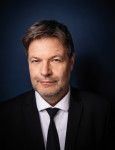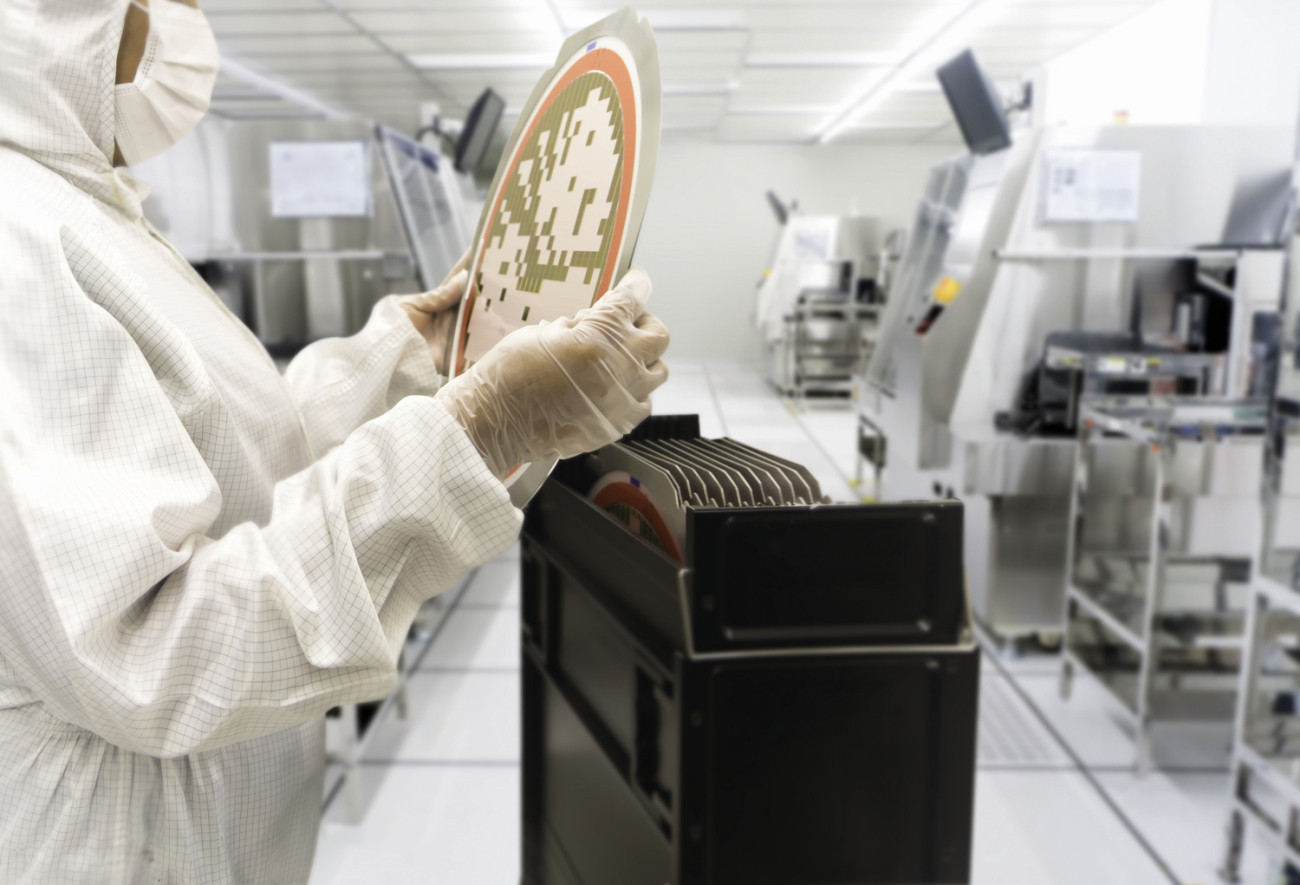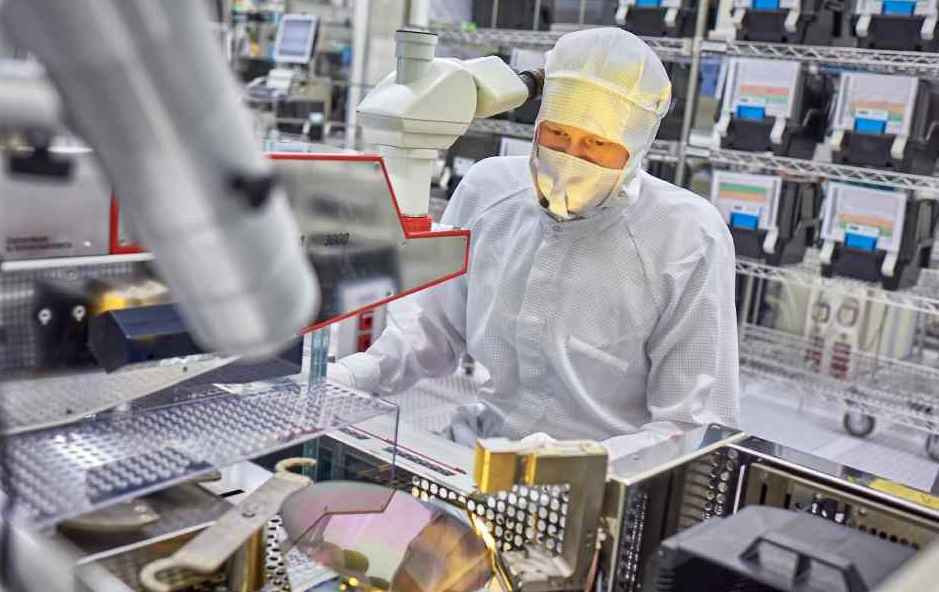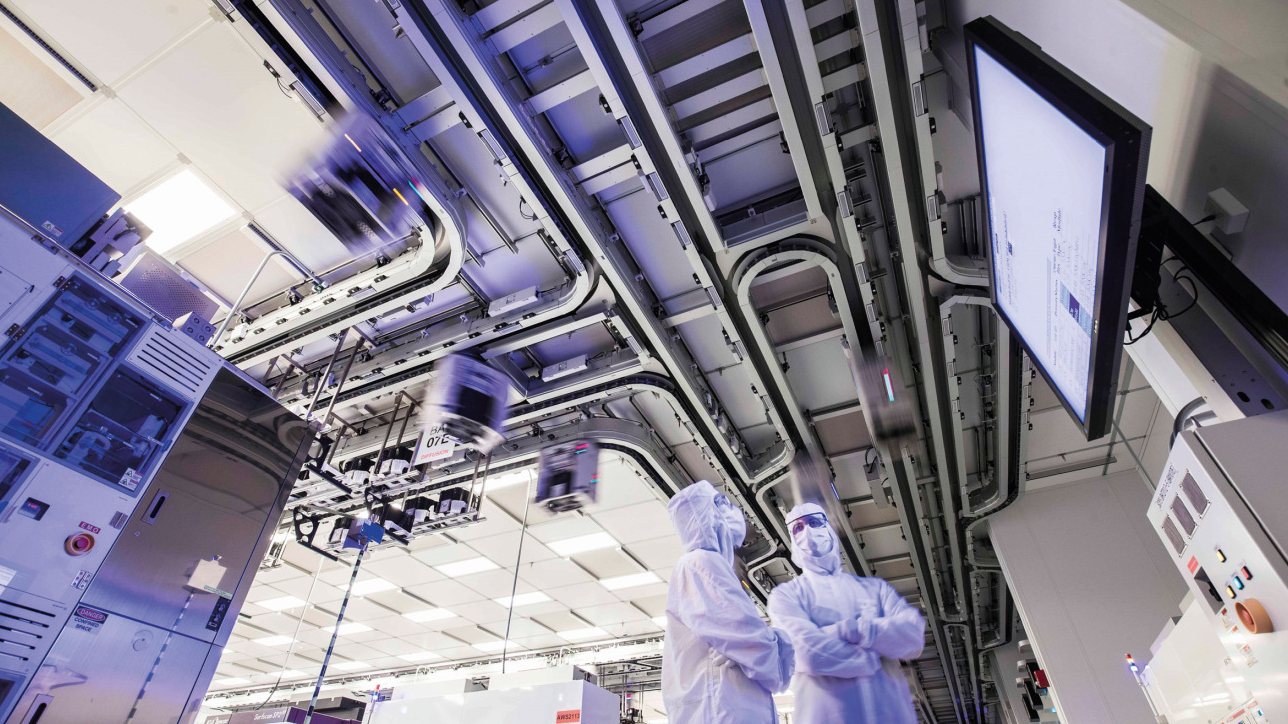The Saxon and European semiconductor industry is on the move again: Infineon has received the green light from the Federal Ministry of Economics for the construction of its multi-billion chip factory in Dresden. The Dresden cluster is hoping that Wolfspeed's decision to build a large high-performance semiconductor fab in Saarland will provide new impetus. Meanwhile, however, Intel's major investment in Magdeburg has been shaky for some time - the Americans are criticizing the high German energy prices and demanding even more subsidies. Meanwhile, Globalfoundries is parting with its back-end department and relocating its plant to Portugal - where Amkor wants to expand its chip final assembly factory to European dimensions.
Infineon's new factory building will definitely set standards for Europe's microelectronics industry: At €5 billion, it will be the largest single investment in the history of the former Siemens subsidiary. However, the funding procedure is also remarkable: Firstly, because Infineon is willing to settle for a 20% subsidy rate, i.e. €1 billion from the taxpayer, while Intel has negotiated a whopping 40% subsidy rate for its factory plans in neighboring Saxony-Anhalt - and is now demanding even more. And secondly, because for the first time a major semiconductor investment is to be subsidized via the new European chip law, although the 'European Chips Act' has not even been formulated yet.
This is also one of the reasons why Infineon had been waiting for special approval from the Federal Ministry of Economics before making its final decision for the massive expansion in Dresden. This 'approval for an early project start' has now been granted and the company has thus also committed to a construction start in fall 2023.
 Robert Habeck, German Federal Minister for Economic Affairs and Climate Protection and Vice Chancellor
Robert Habeck, German Federal Minister for Economic Affairs and Climate Protection and Vice Chancellor
"When it comes to investment decisions, speed counts" Federal Minister for Economic Affairs Robert Habeck
"With Infineon's project, we are strengthening Germany as an industrial and semiconductor location," emphasized Federal Minister for Economic Affairs Robert Habeck (Greens). "Following the establishment of Wolfspeed in Saarland, this is another strong sign of Germany's attractiveness as a business location." He went on to emphasize: "When it comes to investment decisions, speed counts. I am therefore very pleased that we have succeeded in approving an accelerated project start, and for the first time for a project that will be launched under the European Chips Act."
Globalfoundries closes chip contacting line in Dresden
Silicon Saxony, on the other hand, will have to make concessions at the end of the microelectronics value chain, in the backend. The US chip contract manufacturer Globalfoundries (GF) is closing its final contacting department (Bump and Sort Facility) in Dresden and relocating it to Porto.
Although it will remain under GF ownership, it will be integrated into a larger European test and final assembly factory operated by Amkor Technology.
The two companies describe this decision as a major step forward for Europe. "This strategic partnership with GF will establish and enhance a competitive supply chain for advanced semiconductor packaging in Europe to complement the offering in Asia," says Amkor manager Kevin Engel. Globalfoundries has been seeking a stronger "European manufacturing ecosystem to support local and global customers, particularly in the automotive markets," added GF manager Mike Hogan.
The 'Bump and Sort Faciliy' was created when the GF plant was still owned by AMD. This is a department that tests wafers that have already been fitted with chips and then applies small contacting beads made of zinc and silver. GF is now relocating these capacities to Porto. This development may well have positive effects for Europe's microelectronics industry as a whole. Experts have long been calling for the establishment of a large European chip final assembly plant.
"This partnership with Amkor in Portugal will provide much-needed services within the EU and expand the US-European semiconductor supply chain." Mike Hogan
Incidentally, the plant in Porto already had special connections to Dresden in the past: it originally belonged to the Infineon subsidiary 'Qimonda' - the memory chip manufacturer regularly sent engineers from Dresden to Portugal during the build-up phase to transfer their expertise to Porto. After the Qimonda bankruptcy, the Portuguese state rescued the backend factory, which continued to operate as 'Nanium' in 2010. Amkor then took over the factory and the entire Nanium company in 2017 - and now wants to lift the backend factory into a new league with the help of the Europan Chips Act.
"Optimal investment and innovation conditions in Saxony"
Digitization, the energy transition, electromobility, AI & Co. will ensure high demand for semiconductors for years to come. And even if 'Silicon Saxony' is losing a link in the semiconductor value chain in this specific case, it is becoming apparent that the EU Chip Act will give the location new momentum. "The European Chips Act will consolidate Saxony as a microelectronics location for decades to come," says Saxony's Minister of Economic Affairs Martin Dulig (SPD) with conviction. The EU initiative will "guarantee optimal investment and innovation conditions as well as the strong competitive position of Saxon microelectronics and the entire industrial and technology location of Eastern Germany for decades to come." Dulig pointed out that every third chip produced in Europe already comes from 'Silicon Saxony' with its more than 70,000 employees. And regardless of short-term fluctuations, digitalization, the energy transition, electromobility, artificial intelligence and other mega-trends are generating such high demand for semiconductors that further growth can be expected in the microelectronics region of Central Germany. And as a result, Saxony's silicon-based high-tech industries are also growing geographically and in terms of value added: from the old microelectronics stronghold of Dresden to the former GDR semiconductor forges in Erfurt, Teltow and Frankfurt/Oder - and soon also to the Intel site in Magdeburg. In practice, it is to be expected that the future Wolfsspeed factory in Saarland will also be closely intertwined with this ecosystem.
To ensure that Saxony can continue to play a technological role in shaping this development in German microelectronics, the Free State is continuing to invest heavily in its scientific landscape - Science Minister Sebastian Gemkow (CDU) has promised around 17 billion euros for this purpose by 2030. He has also launched a 'Spin2030' campaign. Among other things, the investments and campaign are intended to strengthen training capacities for high-tech professions in the state, underpin Saxony's claims to leadership in key technologies such as microelectronics, artificial intelligence (AI), intuitive robotics, quantum computer technology, cancer research and materials research and attract international talent to Saxony in a targeted manner. "We are tackling several major challenges here," emphasized the Minister. The fruits of these efforts will benefit the semiconductor industry and related high-tech sectors in particular, but not only.
Economic policy-makers and industry representatives in Saxony are convinced that even if some investment projects and factory expansions have recently been somewhat shaky, the strategic demand for semiconductors will remain high on a global scale for years to come. The indications of this can be seen at the beginning of the value chain, where the suppliers of new chip factories and their suppliers are located. A look at the recent growth of lithography manufacturer ASML - which also has a branch in Dresden - shows where the train is heading: the company has now grown into a European tech giant with a turnover of over 21 billion euros and is also pulling its German suppliers along with its strong order situation. "Important partners such as Carl Zeiss are diligently building up their capacities and doing everything they can to eliminate the congestion in the supply chain," ASML CEO Peter Wennink recently reported in a message to shareholders.
Major order for Jenoptik
This pull also applies to other chip manufacturers and suppliers. Jenoptik recently acquired a major order from an unnamed "global technology group" to supply it with optical microelectronics equipment. The new major order should also benefit the Dresden site: Jenoptik has already been producing micro-optics for the chip industry in 'Silicon Saxony' for years. In view of the increasing demand, the Jena-based company is currently expanding these capacities in Dresden and is building a new 70 million euro factory for this purpose.
 The order situation from the semiconductor industry is developing well for JenoptikEvenbeyond high-end chips, the continued good medium and long-term demand in the semiconductor industry is making itself felt. Thanks to a good order situation from the automotive sector and other industrial sectors, sales at 'X-Fab' rose by 12% to $739.5 million (€662 million) in 2022. "Our expertise in special applications for the automotive, industrial and medical sectors continues to be well received in the market," says X-Fab CEO Rudi De Winter. "We are well on track not only to reach our sales target of $1 billion in 2024, but also to continue to grow strongly beyond that." X-Fab, which was originally founded in Erfurt, now plans to invest a further €1 billion in all of its locations by 2025. Among other things, the contract manufacturer for mixed-signal chips is also planning to expand its factory capacity in Dresden by a tenth.
The order situation from the semiconductor industry is developing well for JenoptikEvenbeyond high-end chips, the continued good medium and long-term demand in the semiconductor industry is making itself felt. Thanks to a good order situation from the automotive sector and other industrial sectors, sales at 'X-Fab' rose by 12% to $739.5 million (€662 million) in 2022. "Our expertise in special applications for the automotive, industrial and medical sectors continues to be well received in the market," says X-Fab CEO Rudi De Winter. "We are well on track not only to reach our sales target of $1 billion in 2024, but also to continue to grow strongly beyond that." X-Fab, which was originally founded in Erfurt, now plans to invest a further €1 billion in all of its locations by 2025. Among other things, the contract manufacturer for mixed-signal chips is also planning to expand its factory capacity in Dresden by a tenth.
 View of X-Fab's Dresden factoryIn the immediatevicinity, engineers from Dresden's Fraunhofer Photonics Institute IPMS are working on the quantum technologies of tomorrow and the day after tomorrow, which will probably only lead to production-ready product lines in chip factories in a few years' time. For example, IPMS is involved in the 'Quinsida' project, which is aimed at light-based, encrypted office data networks that cannot be eavesdropped on even by attacks from quantum computers.
View of X-Fab's Dresden factoryIn the immediatevicinity, engineers from Dresden's Fraunhofer Photonics Institute IPMS are working on the quantum technologies of tomorrow and the day after tomorrow, which will probably only lead to production-ready product lines in chip factories in a few years' time. For example, IPMS is involved in the 'Quinsida' project, which is aimed at light-based, encrypted office data networks that cannot be eavesdropped on even by attacks from quantum computers.
Protection against quantum attacks needed
The background to this is the concern that quantum computers will be so powerful and cheap in a few years' time that cyber criminals and secret service agents will be able to use them to crack any encryption, however strong, based on the decomposition of large numbers into prime factors, for example, within seconds. What is therefore needed is a 'post-quantum cryptography' that works with new encryption methods and is also physically better protected against quantum computer attacks. "This type of coding cannot be cracked even with any amount of time and computing power," the IPMS engineers hope. The approach of the 'Quinsida' consortium, in which the Dresden photonics experts are involved: They want to use 'Lifi' (Light Fidelity) solutions for data transmission, in which data and telephony are not transmitted by radio, but by light. And as this light cannot pass through walls, this makes eavesdropping from outside much more difficult. On the other hand, the partners want to create a system that only distributes special quantum keys to authorized network participants ('quantum key distribution', QKD for short).
Another quantum project that Fraunhofer Dresden is working on is 'Quant-ID': "Our goal is to develop a quantum-safe authorization of users in an 'Identity Access Management' architecture using quantum random numbers and post-quantum cryptography," reports IPMS group leader Dr. Alexander Noack. The group also wants to develop a highly secure dial-in method with which users can identify themselves for various digital services. The project partners would like to have the planned quantum random number generator certified by the German Federal Office for Information Security (BSI) so that it can then be used more widely. A demonstrator should be ready for operation in 2025.
Soft robotic arm with neurons demonstrated
And finally, some fascinating news from the Dresden start-up scene: Dresden University spin-off 'PowerOn', which specializes in tactile robots, has completed the first demonstrator of a robotic gripper arm with artificial muscles, neurons and skin. The gripper is intended to take the way robots handle objects and interact with people to a new level.
"We are seeing a strong trend towards automation in all areas of industry and will soon be experiencing this in our everyday lives," PowerOn CEO Markus Henke is convinced. Because if robots can, for example, feel a person's hand and shake it with the right amount of force, if they learn to sort fruit in such a way that there are no bruises afterwards, then new career prospects will open up for the artificial helpers: they could then, for example, sort eggs or test tubes, demould rubber products from injection molds, harvest fruit and vegetables or even work in the household and in elderly care. In view of the shortage of skilled workers, Henke sees great potential here.
To this end, PowerOn is developing plastic muscles and skin as well as artificial neurons that ensure decentralized control of the robot's hands. The gripper now presented is printed from flexible materials, contains no classic joints and is equipped with a tactile skin which, according to PowerOn, can sense how and where an object has been gripped.
 The gripper from PowerOn still looks a little clunky, as it is still a demonstrator. It is intended to demonstrate the interaction of artificial muscles, neurons and skin on robotic hands
The gripper from PowerOn still looks a little clunky, as it is still a demonstrator. It is intended to demonstrate the interaction of artificial muscles, neurons and skin on robotic hands
Sources
BMWK, Oiger.de, ASML, Globalfoundries, Infineon, Ankor, Sächsische Zeitung, X-Fab, TUD, PowerOn, IPMS




